How to Develop a Content Marketing Strategy
Share this Article

Content marketing chase is doomed to failure without a proper content marketing strategy. If you want to be a winner in this competition, your content marketing must demonstrate the following result:
You might wonder how to achieve this tremendous result.
Frankly speaking, it is achievable for everyone who knows how to develop a content marketing strategy correctly.
In this guide, you will get a step-by-step tutorial on creating a content marketing strategy.
The Concept of Content Marketing Strategy
The concept of content marketing strategy is quite straightforward. It is all about sticking to a plan for creating high-quality content. The purpose of this content is to convert the representatives of your target audience into paid customers.
It might sound simple at first sight.
However, challenge number one here is to create content that would bring conversions.
How is it possible to achieve this?
By following a golden rule – your content must solve the issues your potential customers have. It doesn’t mean that your content should be something like “you have a problem – our service is the solution”, no. Your content must clearly show your target audience that you understand the problem. And you have a solution how to solve it.
Try to use the content as a tool for educating your target audience first of all. Follow the main concept of content marketing strategy – think about the problem and give pieces of advice on how to make life easier.
“In my experience, the success of a content marketing strategy often hinges on how well you understand and connect with your audience. This is especially true when creating content for different countries where getting the local nuances right can make all the difference. We’ve observed that when content is tailored to the specific cultural and contextual needs of our audience, it not only resonates more but also drives higher engagement. So it isn’t just about translating words; it’s about translating ideas and meaning to inspire engagement and drive results.“
—Roman Kotzsch, CEO at Milengo
Therefore, don’t shy away from adopting your content marketing strategy to all possible channels and formats, like video content (YouTube), audio content (podcasts), and interactive written content (using content design practices).
If you decide to go on your own and adapt your content to video format, you’ll probably want to start with an easy-to-use online video editor like InVideo and learn the ropes. See the example video we created using InVideo AI.
Now, let’s review how the right content marketing strategy affects your business in terms of attracting new leads.
Key Takeaways
- 40% of marketers have a well-documented content marketing strategy,
- 71% of content marketers reported that content marketing has grown in significance in the past year,
- In 2023, 62% of B2B businesses intend to leverage AI content generation tools for content marketing efforts,
- 78% of content marketers reported that their organizations plan to invest or continue investing in video,
- 48% of marketers have a monthly content marketing budget of up to $5k,
- 71% of B2B buyers consume as much blog content as possible during the purchasing process,
- 40% of leads consume three to five pieces of content before considering reaching out to a salesperson,
- Nearly 50% of buyers watch product videos before making a purchasing decision.
- 84% of organizations prioritize a content marketing strategy.
- 76% of companies have no more than three content writers on their team.
- Content marketing leaders understand the importance of purposeful creation aligned with the target audience and long-term goals.
- Successful content marketers understand that their content cannot exist in a vacuum. It must reach their target audience at the right time, ensuring its effectiveness and relevance.

So, how do you create a content marketing strategy that pays off?
Here Are Nine Steps You Should Follow Step-by-Step to Succeed
Let’s review them.
1. Start With Setting a Goal
You can’t put a content marketing strategy into action without setting a goal. Your goal is a kind of a road map that leads you the way.
How to set a goal?
You can stick to following a few concepts – SMART goals and OKRs.

On the other hand, you can simplify goal setting. Base it on attracting targeted traffic from search engines. Otherwise, you can include the following subgoals:
- Build more backlinks
- Work on brand awareness
- Focus on acquiring more inbound leads
- Become an influencer within the niche
In this very case, your goal is to attract targeted traffic with the help of a content marketing strategy.
2. Research Your Target Audience Carefully
By far, the most important thing you need to understand about creating a content marketing strategy is that you need to start by thinking about the most important people of all: your audience.
You can’t compare a content marketing strategy with the other marketing strategies so far. It has a tight connection with a target audience.
For example, in contrast to content marketing strategy, photography marketing has a less direct correlation with the audience. It depends more on the environment and the objects that a photographer uses for creating content.
Start with asking yourself these questions:
- Who is going to consume your content?
- Where do they like to hang out online?
- What types of questions do they have that you might be able to answer?
- What do they like?
- What do they dislike?
- etc.
These are all the types of questions you need to answer right before thinking about the next steps. Don’t bother yourself with writing a post or spending hours with a flowchart generator trying to create something unique.

Consider what these people want and need to hear and build your message (and your content) around that insight. That is why many organizations find it helpful to work on creating a buyer persona beforehand.
A buyer persona is a collective term that describes your ideal customer with all nuances included.
Eventually, it gives your someone to “write to” every time you sit down at your computer to work on that next big project.
3. Think About a Content-Type to Choose
The variety of content types is mindblowing. You might want to embrace all the types suggested at once. However, it is not a good practice at the beginning stage of content marketing planning.
Choose one type you think works the best for capturing your target audience’s attention.
To help you choose the right type of content to work with, review these two suggestions:
Research What Type of Content Your Target Audience Likes the Most
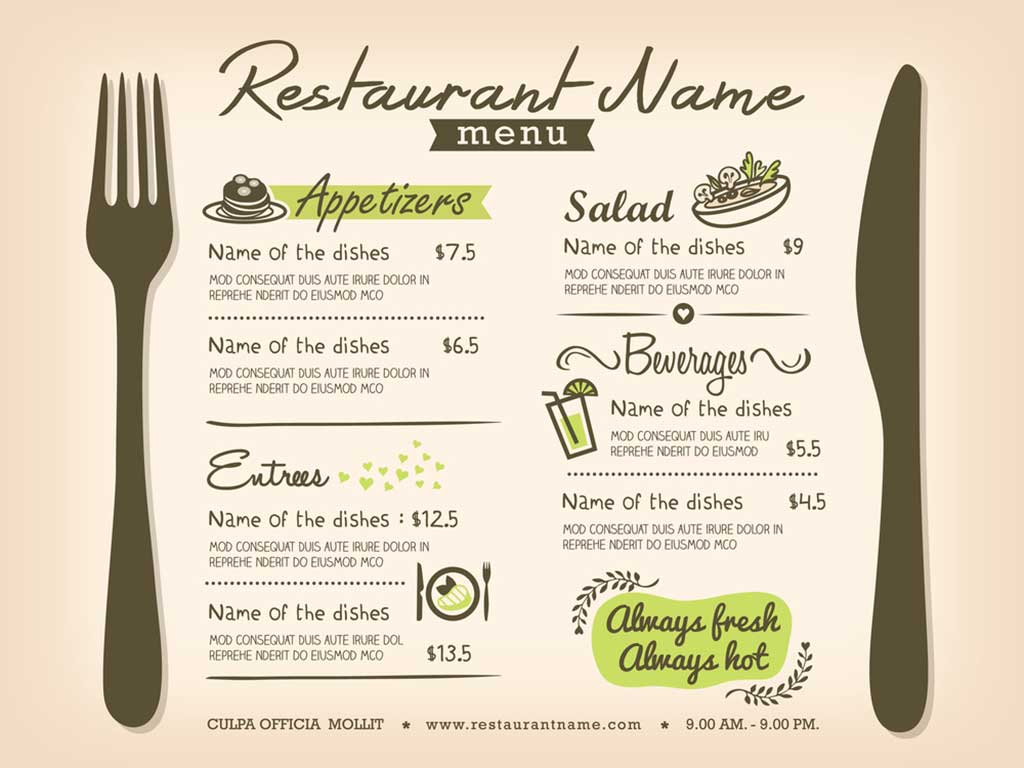
For instance, if your business is related to cooking, you might need to share different recipes with your audience. Video content is the best option in this case.
If you deal with the hotel & restaurant industry, you should focus on producing interactive content with visual elements. Let’s say you want to explain to your audience how to create a menu. You give some pieces of advice, a step-by-step tutorial, and suggest a menu maker tool that can simplify the process.
Familiar with Canva?
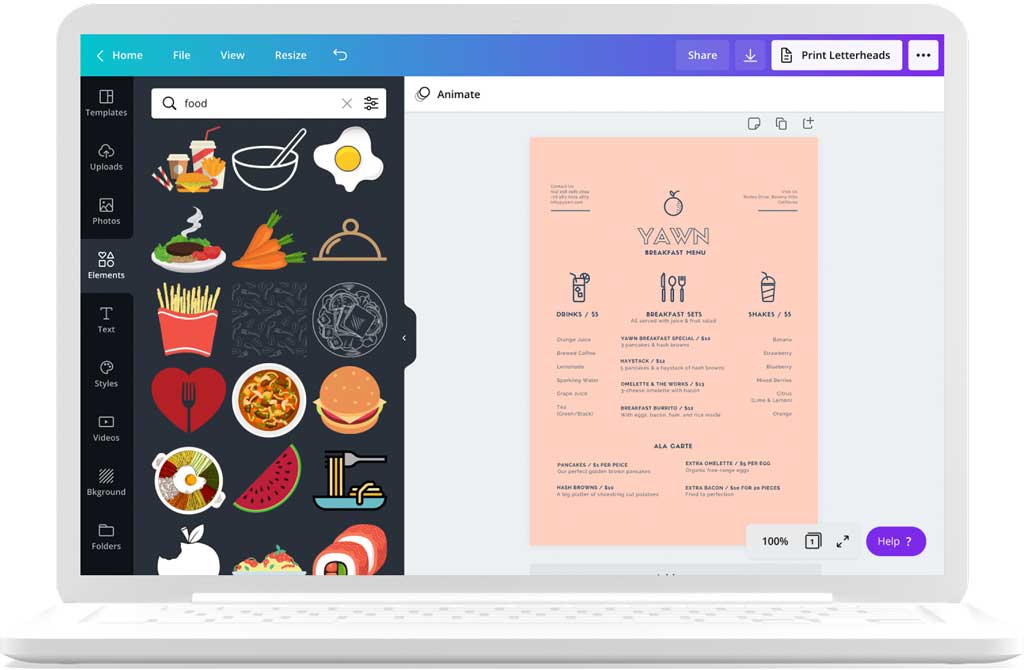
Canva’s All In One Menu hub is the perfect way to advertise your culinary creations. It helps you transform a handful of food photos and some saucy sentences into a complete, professional-looking menu in just minutes! Turn a few good recipes and your inner foodie into one happy customer with an easy-to-use online graphical editor, building an impressive custom menu has never been easier – all it takes is just a click (or two) of your mouse buttons!
Estimate Your Personal Skills
Think about what you can do the best – write content or record videos. Decide for yourself what you do with joy. Otherwise, you can hire a freelancer who would create the exact type of content you need.
4. Explore What Your Target Audience Is Looking for Across Main Search Engines
When you know the type of content you’re going to work with, you should explore what your target audience is searching for. It is the only way that will help you create content people want to see from you.
People use queries to find the information they are interested in. Your task is to identify these queries that would be “seed” keywords related to your business.
For instance, if you own an online music store, your seed keywords would be “guitar”, “drums”, “guitar amplifier”, etc. You need to know how you could implement these keyword variations in your content.
Therefore, you need to base the topics on what people are concerned about.
You can use the “Questions” report in the Keywords Explorer tool from Ahrefs.
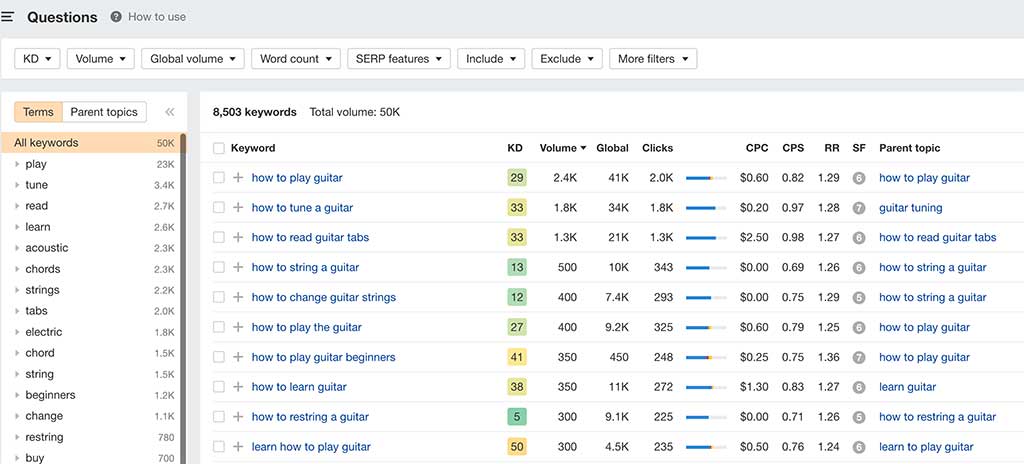
This report suggests a list of phrases that contain target seed keywords. The phrases are in interrogative form. By using these suggestions, you will be able to come up with topic ideas easier.
You can also check out our Free Topic Ideas Template to help you craft your content topic ideas.
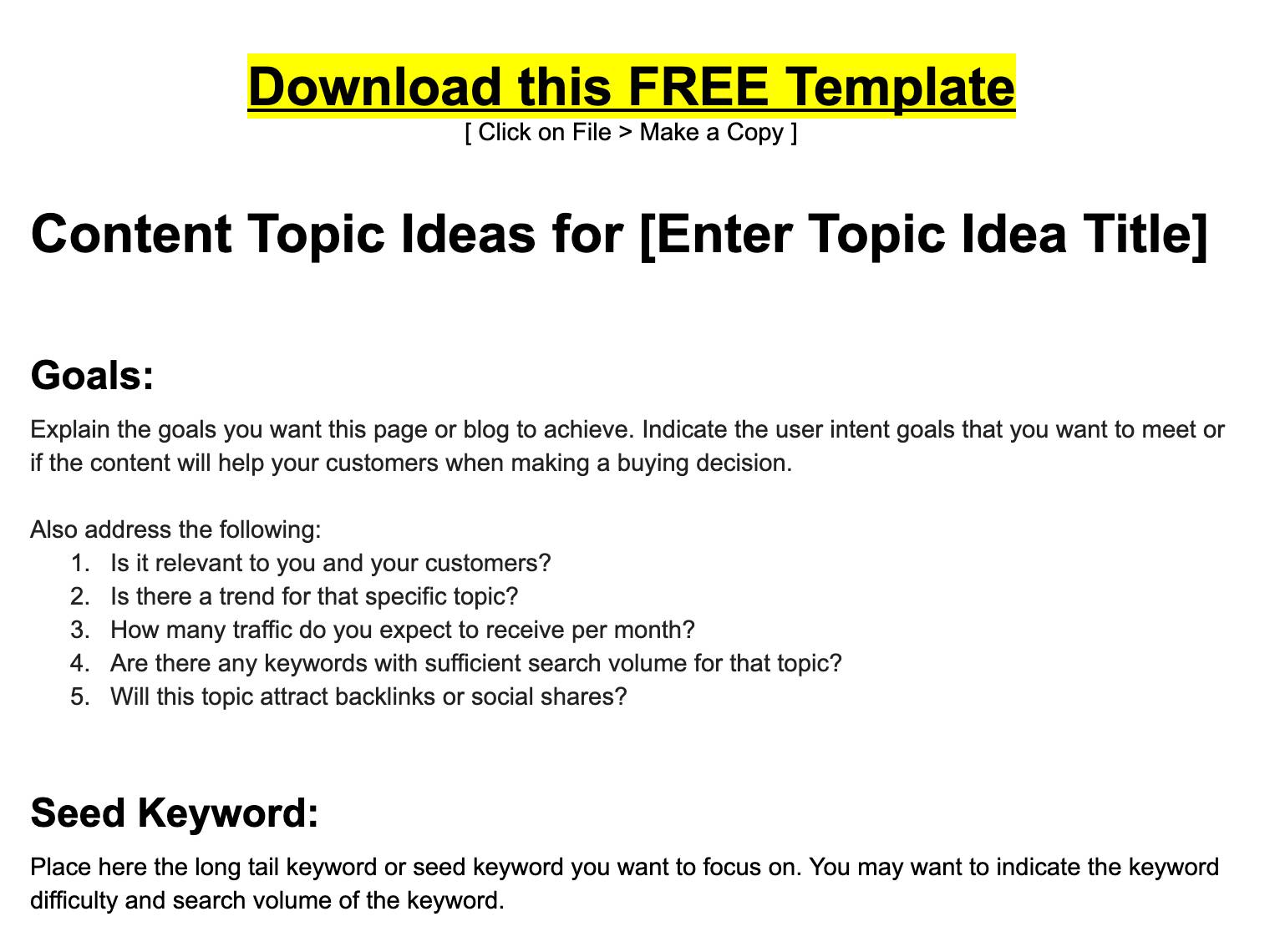
5. Topic Prioritization
You can’t attract targeted traffic without covering the topics that would ring the bell with your audience. Thus, you should be working on topic prioritization first.
You can prioritize topics by assigning a business value score to them.
Here is the scale you can use:
- “0” – your product/service doesn’t have anything in common with the problem
- “1” – your product/service can help to solve the problem slightly
- “2” – your product/service helps solve the problem but there is no need for it
- “3” – your product/service is the only right solution to solve the problem
This scale can be used for whatever business you run. Just make sure you assign a business value score correctly.
After the topic prioritization, you will need to create a content outline to guide your writers. Check out our Free Content Outline & On-Page Recommendations Template.
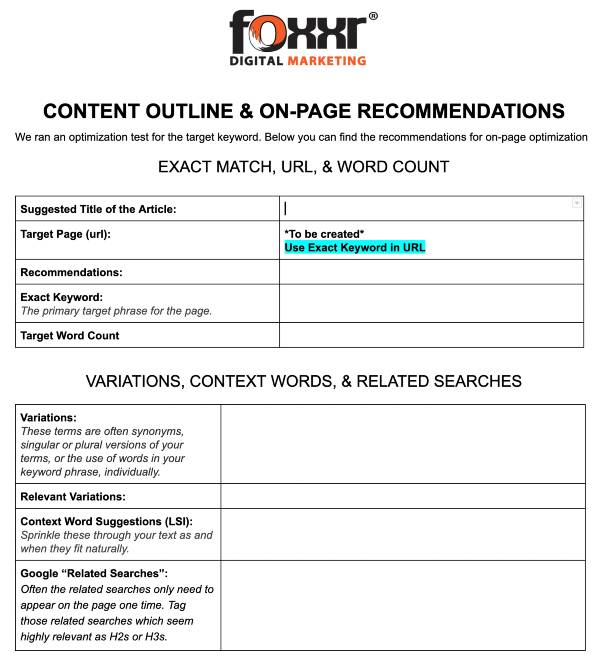
6. Create a Content Calendar

Another one of the most important things to keep in mind about content marketing in the modern era is that, above all else, consistency is king.
People aren’t going to sit up and pay attention to what you have to say if all you do is write a new blog post or record a new video once a month. To get anywhere near what you hope to achieve, you need a steady stream of new content hitting the web as often as possible.
This means not only blog posts and white papers, but also infographics, presentations, live videos, webinars – you name it. Because of the sheer volume of content, you’ll need to create, you can’t just shoot from the hip. Everything needs to be laid out in a way that is easy for you and your team members to understand.
That means creating a content calendar so that you know exactly which pieces are still being worked on, which ones are ready to go and when, specifically, they will all be published.
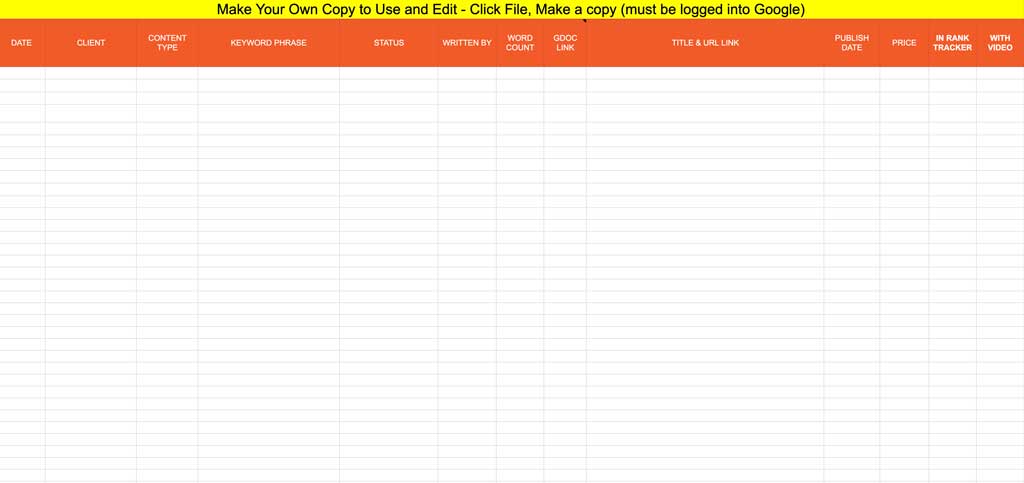
7. Content Promotion
Even if you created a piece of high-quality content, it won’t be noticed by your target audience by itself. You need to promote it.
To promote your content you can follow these three simple ways:
Send a newsletter with the content updates
You should send a newsletter by using an email list you had prepared before. It will help you notify your loyal customers (and people who are just subscribed to your blog) with a news piece of content published on the blog.
Use paid advertisement
One of the fastest ways to introduce your content to your audience is via paid advertising. It costs money but you will get trackable results in return – impressions, clicks, and conversions.
Outreach
If the first two ways put your content in front of your potential leads and existing customers, outreach helps you reach out to influencers within the niche.
What you will get from this type of promotion in return?
Influencers have lots of followers. Thus, they could share your content with the masses and give a boost to it.
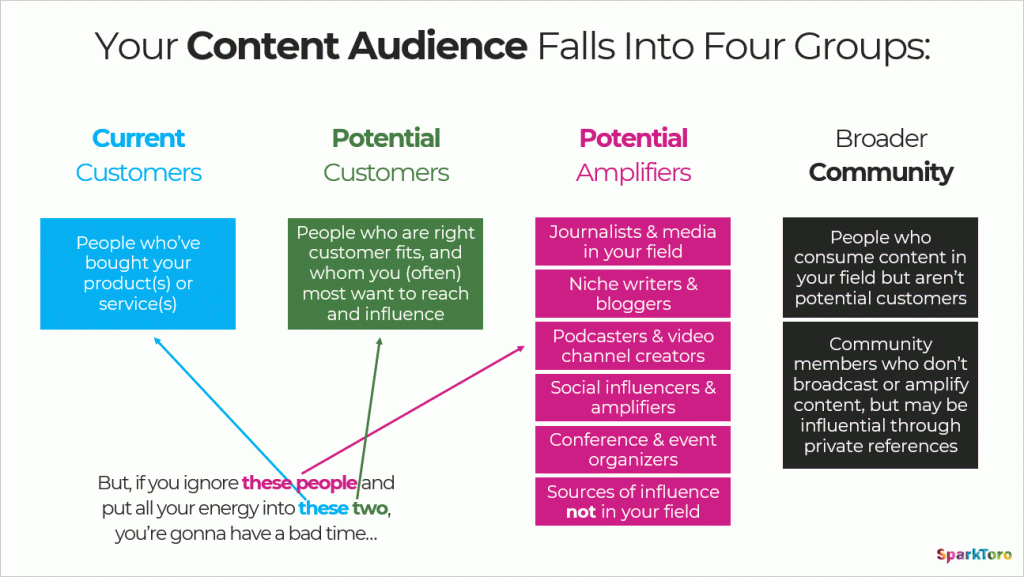
Plus, any kind of cooperation with a niche-related influencer gives you a chance to earn shares, build links, get referral traffic, or build a partnership.
You might wonder how to make the influencer read your email and reply back?
You can do this by mentioning the influencer in your content. Or you can try to impress with the research (case study) you made.
8. Keep an Eye on the Results Achieved
To understand whether your content works well, you need to track the results it brings.
There are lots of analytical tools that can help you analyze the performance of your content. Yes, these tools can provide you with interesting and useful stats but the majority of them will cost you money.
In contrast to this, you can track the results using Google Analytics and YouTube Analytics platforms.
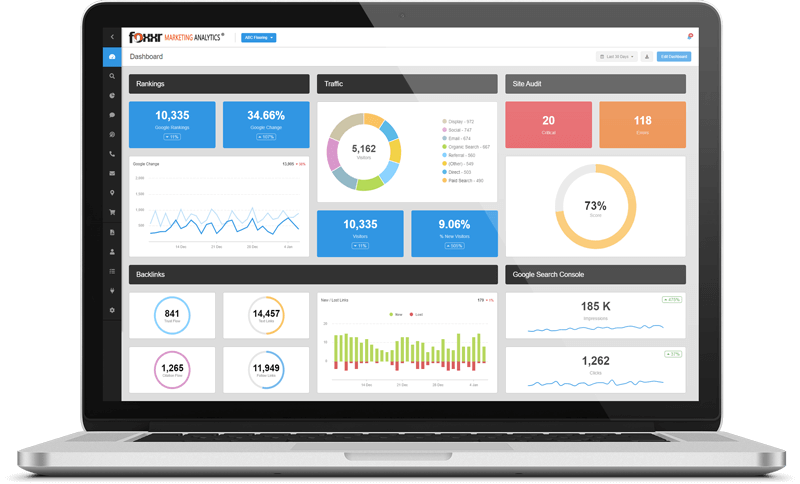
9. Repurpose Your Content
Sometimes happens that your content doesn’t impress your target audience. Your website starts lacking traffic. There are no more leads come to your landing pages through content on your blog.
What does it mean?
It is time to think about content refreshing.
Unlikely video content can’t be repurposed due to technical specifications. However, you can repurpose your blog posts in whatever content form you like.
You can stick to transforming your written posts into infographics, charts, videos, and more. For example, why not repurpose your post on blogger outreach into a step-by-step flowchart?
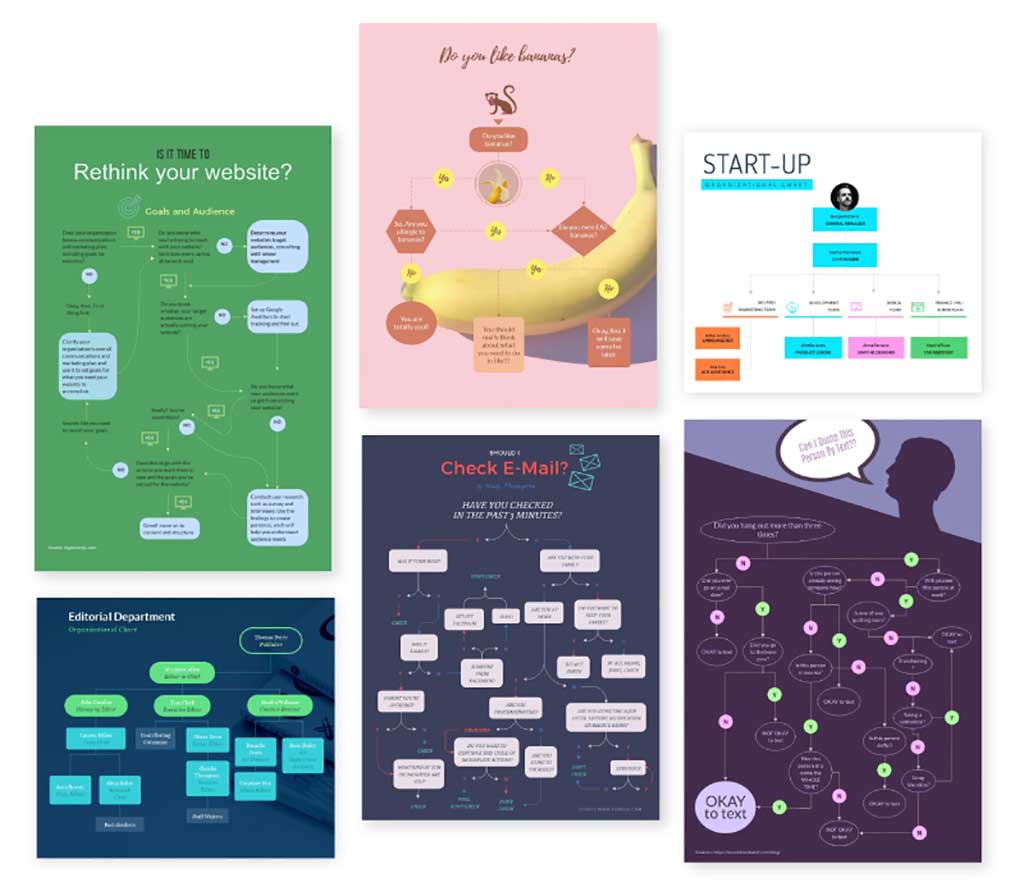
The only thing that you will have to take into account is that content repurposing might need you to use additional tools. In the case of creating a flowchart, you will need to work with a flowchart maker tool.
To Sum Up
Developing a content marketing strategy is like a snowball effect. It starts with small tiny things and revs into gear with time.
At the beginner stage, the results are almost invisible. But if you play in a long-term game, the results will be overwhelming for sure.
Content marketing loves patience and commitment. Don’t forget about it!
Published on: March 2, 2021
Updated: November 8, 2023
